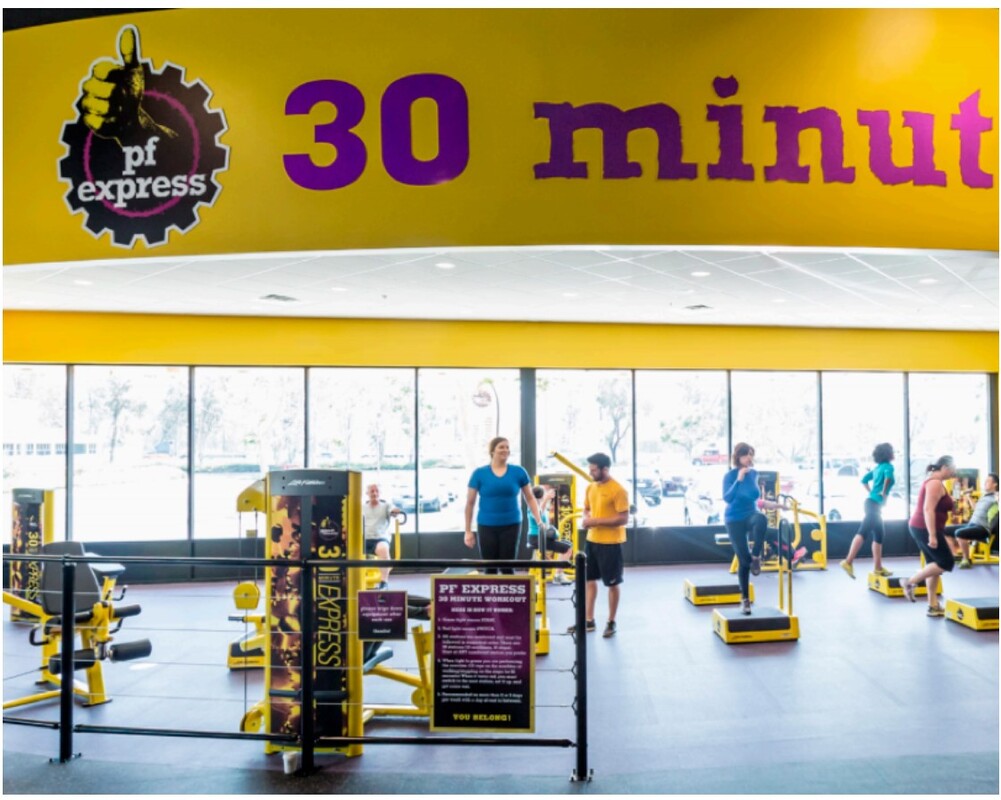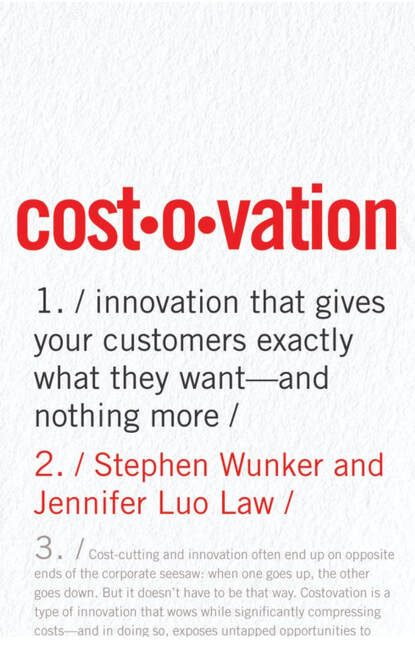|
What if doing less for your customers is actually the way to make them love you more? Here’s a great example: Planet Fitness. Aside from its electrifying bright purple and yellow decor, Planet Fitness looks like any other gym. There are rows and rows of elliptical machines and treadmills. There’s a basic locker room. The current top-40 hits are pumping over the speakers. But on closer inspection, you’ll notice that there is actually a lot missing from this gym. There are no studios for yoga or spinning. There isn’t a heavy-free-weight section. There aren’t even any personal trainers. In fact, Planet Fitness forgoes many common gym features, such as:
Even the typical gym-membership price tag is missing: while the average gym charges $52 a month, a basic Planet Fitness membership costs just $10. But Planet Fitness is not simply a story of a company trying to make a quick buck by slashing services and lowering prices. To understand the secret of Planet Fitness’s success, we need to look at how lowering costs can be a deliberate innovation strategy—one whose aim is to make the fitness experience more satisfying to its customers, not less. Planet Fitness members don’t feel shortchanged by their bare-bones gym. They love that there are rows and rows of cardio machines, which means that they never have to wait to start their workout. And they don’t miss the heavy weights: Planet Fitness’s target customers don’t care for those anyway. Lunchtime workouts are stress-free without personal trainers trying to sell them services. The Planet Fitness model is cheaper to run than anything else on the market, but it still ranks first in customer satisfaction—even ahead of luxury giants like Equinox. And the company keeps growing; at last count, Planet Fitness boasted over 10 million members working out in over 1,100 North American locations. This is a company that has made careful, and sometimes difficult, choices to have a simple, low-cost offering. Along the way, it sacrificed temptations that lure customers to other gym chains—such as personal trainers, a highly profitable add-on service that for most gyms brings in close to 10% of total revenue, or passive sources of income like rent from massage and physical therapists. Planet Fitness’s success highlights an underappreciated approach to innovation: purposefully offering less as a way to satisfy more. Rather than try to compete in the overcrowded luxury fitness field, with its lavish services and hefty price tags, Planet Fitness found opportunity with a customer segment most gyms rule out as unprofitable—casual and first-time exercisers. It then focused on a handful of things that these customers most prize, such as offering reliable workout equipment, with 24/7 access, at consistently low rates. That’s all. The company chops out the usual profit-making mechanisms adored by the industry. It purposely seeks the customers most gyms rule out as unprofitable, because its low costs make those customers far more attractive to it than to rival chains. While the rest of the fitness industry continues to plow upmarket, Planet Fitness forged its own very successful path with a no-nonsense business model that delights its boardroom as much as its customers. This is low-cost innovation, or costovation, hard at work. What is Costovation? Costovation is a type of innovation that significantly compresses costs while still wowing customers. It’s about meeting or exceeding customer expectations with less. Planet Fitness with its low costs and slim offerings—but ecstatic customers—is an example of costovation. Ryanair, an ultra-budget European airline which at one time tried to charge customers for drinking water and bathroom use, is not. The difference is in customer experience. Ryanair tickets can be a grudge purchase, and purchases made with gritted teeth don’t often lead to ever-thriving companies. My colleagues and I have been collecting and analyzing examples of costovation for over 6 years. We have been astonished by how innovation and cost-cutting—so often considered magnetic opposites—can be a powerful duo, capable of reshaping markets and creating long-term competitive advantages. Here’s another example, this time from the hospitality industry. If you’ve ever been stuck on a six-hour layover, you know your options for comfort are bare: you can get in line for a shuttle to a local airport hotel (and plunk down your credit card for an entire night’s stay), or you can cozy up to a worn-out chair in the airport terminal. Both of those options are depressingly unappealing, especially for the frequent traveler. Enter Yotel. Yotel is a hotel chain found in international airports like London’s Heathrow and New York’s JFK. Accommodations are often directly on-site within airport terminals, and rooms are extraordinarily small, fitting just a bed and an airplane-like bathroom. But for time-conscious travelers, Yotel offers exactly what they crave—a comfortable bed, an excellent shower, strong Wi-Fi, proximity to their next flight, and fast check-in. Yotel doesn’t really offer much more than that, yet it’s become quite popular with experienced travelers. This travel segment is not looking for extra amenities such as a tub, a gym, or a pool. And by keeping things simple, Yotel’s back-end operations can be exceptionally lean. It uses automated kiosks for check-in and food vending, and it makes the most of its prime real estate by shrinking room sizes to tiny pod-like cabins. These cost savings enable Yotel to offer rooms that are much cheaper than a typical hotel—cheap enough that travelers use it during long layovers. At the same time, Yotel exceeds competitive offerings in critical ways, such as by providing monsoon showers for customers looking to de-grime after a long flight. Yotel runs a low-cost model, but it still nails the core needs of long-haul travelers looking for a quick place to rest and freshen up. Many industries need a Yotel—a company that excels at offering something at a radically lower price, for a well-defined customer set. Three traits for being innovative—without spending more Next we wondered: what lessons could we glean from Planet Fitness and Yotel? What did they do right that others could replicate? After pouring through hundreds of examples of costovation, three traits emerged: Trait 1: Breakthrough perspective. These companies had a fresh perspective on the market. They threw out assumptions and long-standing industry beliefs, and viewed their market and customers in a way that no one else had. The idea behind this is straightforward: the more unique your perspective on the market, the more you can differentiate yourself. Planet Fitness, for instance, turned its back against long-standing industry wisdom that a gym is not a gym without extensive heavy free weights, and purposely targeted customer types that were considered unfavorable. Being bold allowed Planet Fitness to see its industry’s cost drivers in a new light. Trait 2: Relentless focus. The costovation winners relentlessly focused on a small, tightly defined set of priorities. This also means that came to peace with letting other wants and desires go. Planet Fitness stood its ground against popular extras like Zumba and yoga, which would clog its sleek business model. Yotel resisted amenities like workout areas and common areas that customers might expect from a three-star hotel. Having this kind of laser focus was critical for these companies to confidently navigate difficult trade-offs. Trait 3: Willingness to innovate inside the business. Most innovation work happens on the product itself, which is what customers see and interact with. But companies which excel at costovation—and use it to shake up their markets—also took magnifying lenses to how their offerings were made, delivered, and sold. Yotel didn’t just switch up room layouts and eliminated bathtubs; its innovative thinking went deep into hotel operations, leading to automated check-in and hourly rentals. Companies don’t deliberately set out to make things complicated. But more often than not, they find themselves grappling with convoluted solutions to pressing problems that don’t quite get them where they want to go. The mindset that “success is a function of doing more” so dominates how companies do business that going simple is rarely treated as a viable option. Our view is that creating smart, no-nonsense offerings doesn’t have to come at the expense of innovating and pushing forward. If we’re intentional about it, we can do both. This piece has been adapted from Steve Wunker and Jennifer Law’s new book, “Costovation: Innovation That Gives Your Customers Exactly What They Want—And Nothing More,” to be published by HarperCollins Leaderships on August 14, 2018. Comments are closed.
|







8/15/2018